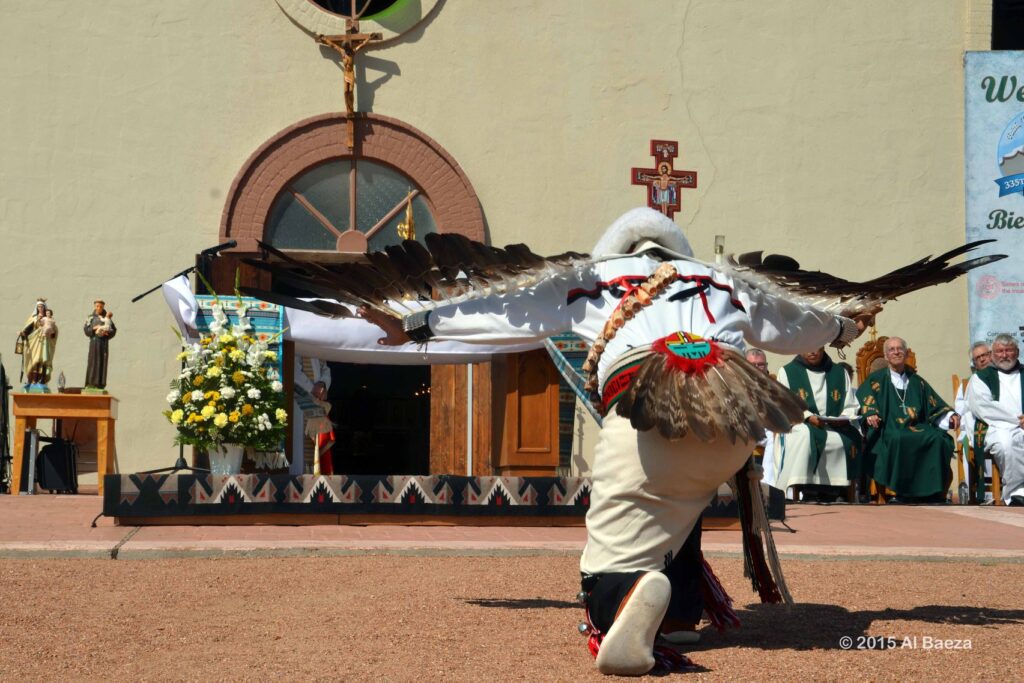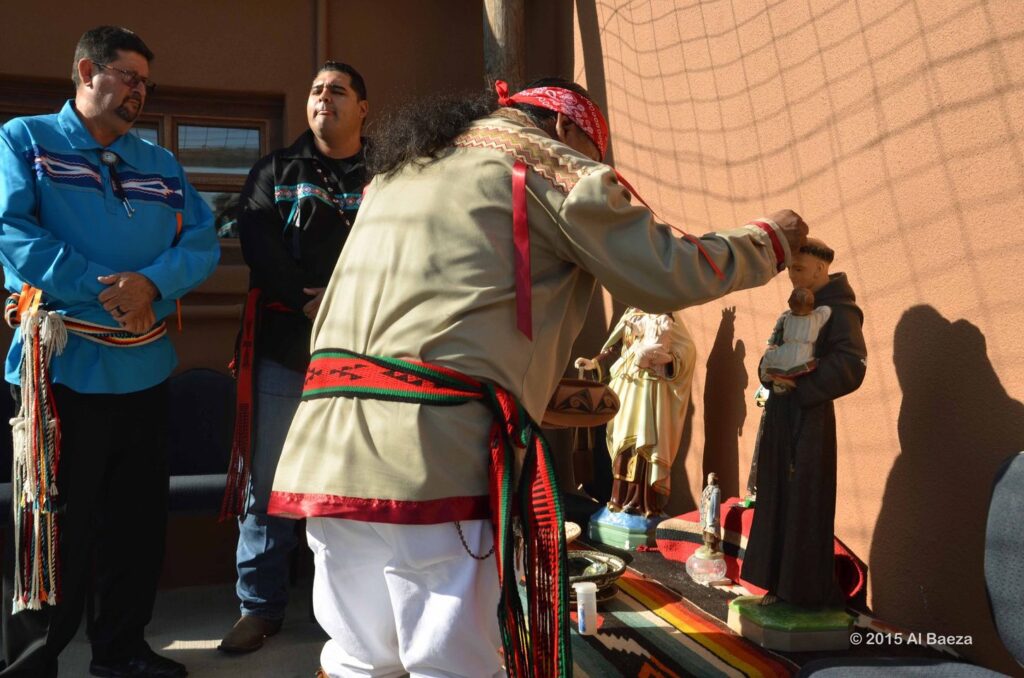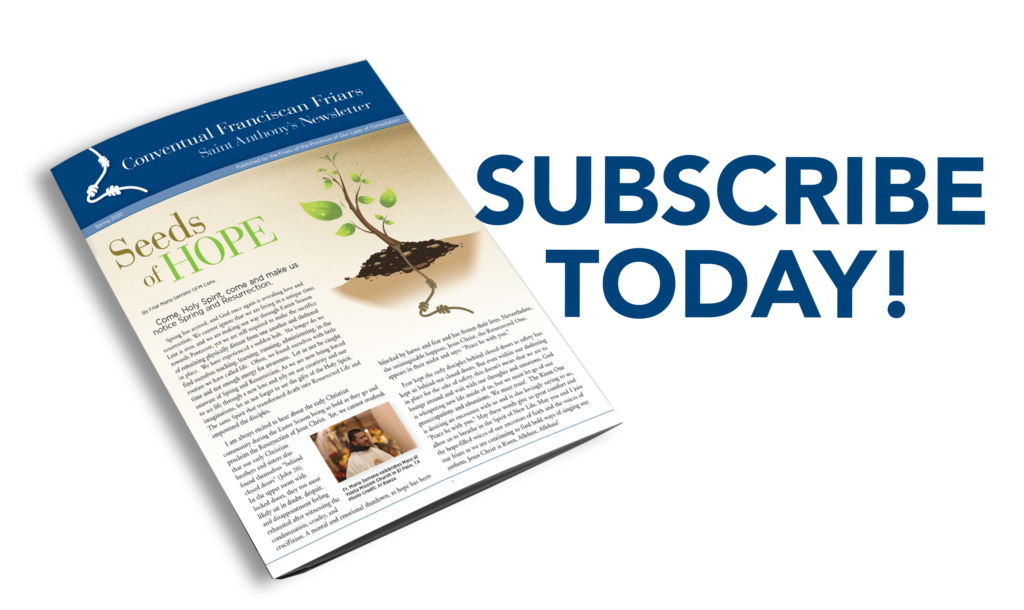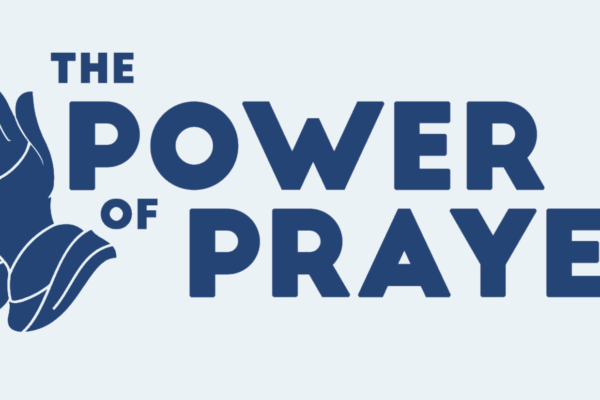Celebrating San Antonio
The Tigua Nation’s Joyful Devotion to Their Patron Saint
by friar Bob Roddy, OFM Conv.
The Conventual Franciscans have had pastoral responsibility for the Ysleta Mission of San Antonio and the parish of Our Lady of Mount Carmel in El Paso, Texas since 1991. The parish and mission are located in the midst of the Ysleta del Sur Pueblo of the Tigua nation of Native Americans. The patron saint of the Ysleta Mission is San Antonio (St. Anthony) and the Tigua nation takes very seriously and very joyfully the celebration of their patron saint with a novena that begins on June 4 and concludes on San Antonio’s feast day of June 13. “Everyone in the Tigua community takes part in these celebrations,” friar Miguel Briseño, OFM Conv., the pastor of the Ysleta Mission, as well as the parish church of Our Lady of Mount Carmel, which is a short walk from the Mission.


Top: A Tigua tribe member performs the Eagle Dance, one of the Tigua’s social dances. Bottom: Former War Captain, Javier Loera blesses the statue of St. Anthony. Javier died this past November.
Photo credit: Al Baeza
The Spanish term, pueblo, which translates as town or village, describes any Native American nation in the Southwestern United States. Some of these nations lived in multi-storied residences; the term pueblo may also describe the government or land set aside as an independent nation.
When the Tiguas of Ysleta del Sur Pueblo migrated from Northern New Mexico to what is now the El Paso region in the late 1600s they carried with them their devotion and love of San Antonio. Within the last 10 years the Tigua community undertook a massive restoration of the Mission church which cost over a half a million dollars. Much of the work was done by members of the Tigua community with their pastor, friar Miguel Briseño, working alongside them.
The core part of the Tiguas’ celebration of San Antonio is a novena which culminates on June 13th. On June 4th, members of the community gather at the home of the mayordomos, Spanish for stewards, the couple who have been selected to oversee feast day celebrations for the previous year. Community members process to the Mission Church for Mass where a special ceremony, La Salida, Spanish for sending faith, takes place. At the conclusion of the liturgy, four statues of San Antonio are blessed and given to members of the community who are sent forth from the location of the original Mission, in the four directions to beg for food and alms which will be used for the Feast Day celebration.
The Tribal Council and dancers are present for each day of the novena. During the novena special days are designated for baking bread or preparing other food which will be served on the feast.
On the morning of the feast, at 7:00 am, the community gathers at the Tusla, a ceremonial kiva— a large, circular, underground room that is used for spiritual ceremonies. During this time, the Anda, a platform on which a statue of San Antonio is placed, is decorated with fresh flowers. The Anda is designed so that it can be carried by members of the community in procession. At 7:30 am, members get painted with the women painting dots on their cheeks; the men are painted underneath their eyes. They also receive a sash and a corn husk. A procession from the Tusla to the Mission church takes place, followed by the Feast Day Mass for San Antonio. After Mass those assembled process out of the Mission church with the Anda that has the statue of San Antonio on it. After the procession, members return to the Mission church and complete promises to San Antonio. Some members “walk” on their knees to make their promises from the entrance of the Mission grounds into the Mission, as they are symbolically whipped, a ritual of purification and penance.
Members of the community then begin to dance in the plaza directly in front of the Mission Church. Everyone in the community dances at some point during the day. The community breaks for lunch at the Tusla, but after lunch they continue dancing until everyone has danced.
The various parts of the Feast Day celebrations for San Antonio are only open to members of the Tigua community, though friar Miguel and the other friars at St. Kateri Tekawitha friary are welcome to attend. “The entire community is devoted to San Antonio and comes out in full force for his feast day,” friar Miguel said, “It is a multi-generational event for the entire community; a genuine celebration, and an inspiration to all.”





